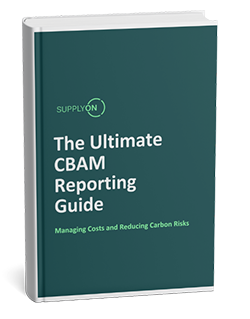The Ripple Effect of CBAM on Global Supply Chains

The European Union’s Carbon Border Adjustment Mechanism (CBAM) has the influence to reshape global supply chains, with significant implications for businesses operating across borders. As a key component of the EU’s broader climate strategy, CBAM aims to prevent carbon leakage and promote global decarbonization. For companies sourcing or exporting goods, understanding CBAM’s ripple effects is essential for maintaining competitive and resilient supply chains.
CBAM in Context
In brief, CBAM imposes a carbon price on certain imports into the EU, ensuring that products subject to less stringent climate regulations abroad do not undermine the EU’s climate goals. Targeting carbon-intensive sectors such as steel, cement, and electricity, CBAM levels the playing field between EU producers and their international competitors.
Direct Impacts of CBAM on Global Supply Chains
CBAM’s implementation brings about immediate and tangible effects on global supply chains. For non-EU exporters, the most obvious impact is the increase in costs. As CBAM imposes a carbon tax on imports based on their embedded carbon emissions, industries with high carbon footprints—like aluminum, fertilizers, and electricity—will face significantly higher costs when exporting to the EU. This increase is likely to be passed down the supply chain, raising prices for end consumers and potentially altering demand patterns.
Moreover, CBAM is forcing companies to rethink their sourcing strategies and supplier relationships. Businesses reliant on carbon-intensive imports may start seeking suppliers with lower carbon footprints to avoid CBAM-related costs. This shift can be particularly challenging for industries deeply entrenched in global supply networks, where switching suppliers isn’t as simple as it sounds. Already, some companies are exploring options to relocate production closer to end markets or investing in cleaner technologies to mitigate CBAM’s financial impact.
Indirect Consequences on Global Trade
Beyond the direct financial implications, CBAM is likely to trigger a series of indirect effects on global trade. One of the most significant concerns is its impact on trade competitiveness. CBAM could effectively level the playing field between EU companies, which are already subject to stringent carbon regulations, and their non-EU counterparts. However, this might provoke retaliatory measures from non-EU countries, who could impose their own trade barriers or carbon tariffs, potentially leading to trade disputes.
On the flip side, CBAM could serve as a catalyst for global decarbonization efforts. By putting a price on carbon emissions, CBAM encourages companies worldwide to adopt greener practices and technologies. This ripple effect might push other regions to implement similar mechanisms, fostering a global shift toward more sustainable trade practices. While this transition may be bumpy, the long-term benefits of a lower-carbon global economy could outweigh the initial disruptions.
Strategic Adjustments for Businesses
For businesses affected by CBAM’s complexities, ensuring ESG compliance is essential. Companies must prioritize transparency in carbon footprint reporting and ensure their entire supply chain aligns with CBAM requirements. This could involve investing in better carbon tracking technologies or working with suppliers to reduce emissions at every stage.
Rethinking supply chain resilience is another key strategy. As CBAM reshapes global trade, businesses need to adapt to mitigate risks. This might mean diversifying suppliers, exploring new markets, or relocating production closer to consumers. For example, a company relying on high-carbon steel from non-EU countries might switch to lower-carbon alternatives within the EU, reducing CBAM liabilities.
The Future Outlook for Global Supply Chains
Looking ahead, CBAM could have a profound impact on global supply chains. As it becomes fully operational, trade patterns may shift. Companies are likely to prioritize low-carbon suppliers and regions. This shift could alter global economic power dynamics, favoring countries that have embraced decarbonization.
CBAM’s influence might also inspire similar measures in other major economies. This could speed up the global move towards a low-carbon economy. However, businesses that don’t adapt could face higher costs and lose out to more agile competitors.
In conclusion, CBAM presents challenges but also opportunities. Forward-thinking businesses can strengthen their ESG strategies and build more resilient supply chains. Those who assess and adjust their supply chains proactively will be better positioned to thrive in a CBAM-impacted world.
Conclusion
CBAM is set to have a far-reaching impact on global supply chains, reshaping how companies source, produce, and trade goods. By increasing costs for carbon-intensive imports and encouraging a shift toward greener practices, CBAM is driving a new era of sustainable trade. For businesses, the key to navigating this change lies in enhancing ESG compliance and rethinking supply chain resilience. Those who act now to align with CBAM’s requirements will not only avoid potential pitfalls but also gain a competitive edge in an increasingly carbon-conscious market.



